Whole-Chicken-Cutting 101 and a Superior Stock Recipe!
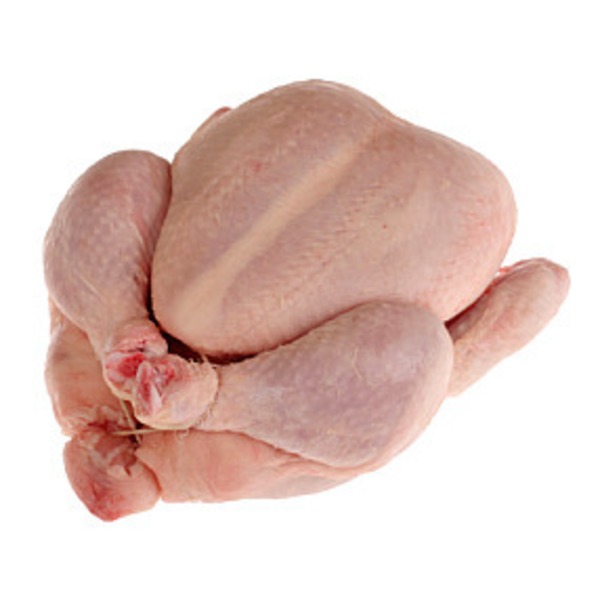
Right off the bat, here’s the gist of this article: buying (and taking apart) a whole chicken is well worth the extra time and effort. Here’s some great stuff I learned on Food 52 (www.food52.com) today that should be passed on:
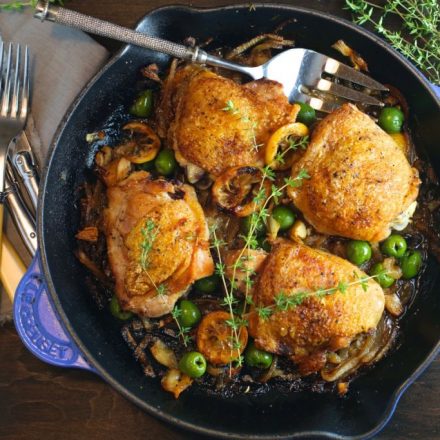
“By divvying up a chicken into thighs, wings, and breasts (and putting those wonderful leftover bones and skin to use) you will be rewarded with a week of abundant dinners. Use the breasts for creamy curries, turn drumsticks into speedy sheet-pan meals, or braise the thighs in cast iron for a perfect, crispy sear.”
I’ve never been a fan of cutting a raw chicken into pieces. But thanks to the Food 52 guide on this topic, I’ve changed my mind. Here are some tips and their step-by-step procedure:
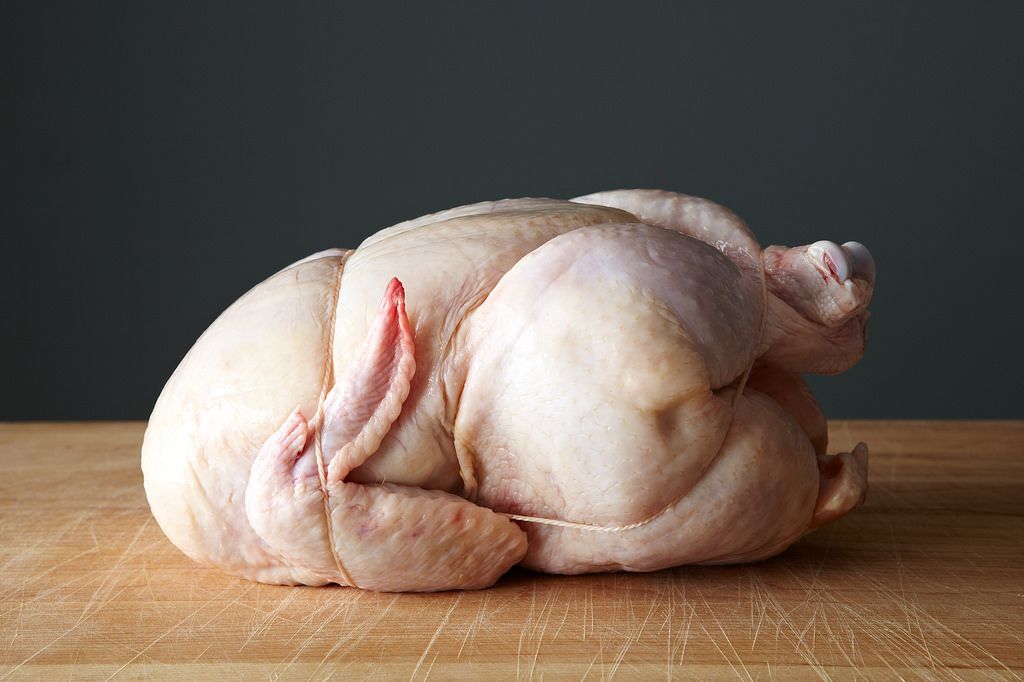
First tip: “The number one most important rule in breaking down a chicken is to get a good boning knife (a non-flexible 8-inch boning knife for poultry); and keep it sharp. There is nothing more frustrating than trying to break down a chicken with a dull knife. Hone your knife on a steel before, during, and after your chicken breakdown. (Note: If you happen to "misplace" your boning knife, a strong chef's knife will work too -- that's what we used here.)
“Another tip: An air-chilled chicken means less slippage and cleaner cuts (plus crispier skin and better flavor!).”
This is the Food 52 chefs’ favorite way to break down a chicken because it leaves you with a carcass and wings for making stock later on (see recipe below). This method gives you two bone-in legs and thighs, two full wings, and two boneless breasts.
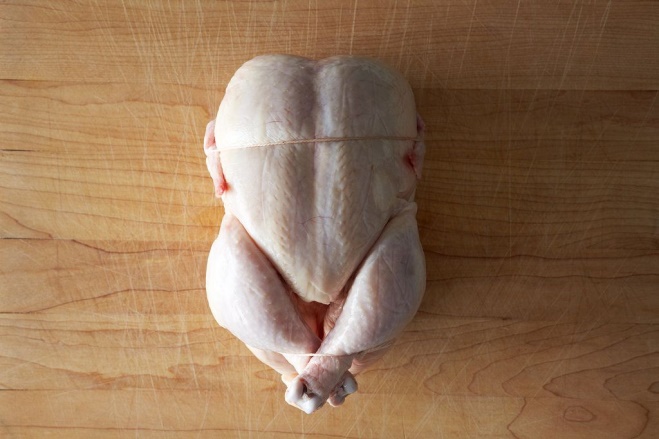
“Lay your chicken, breast-side up, on a clean cutting board.
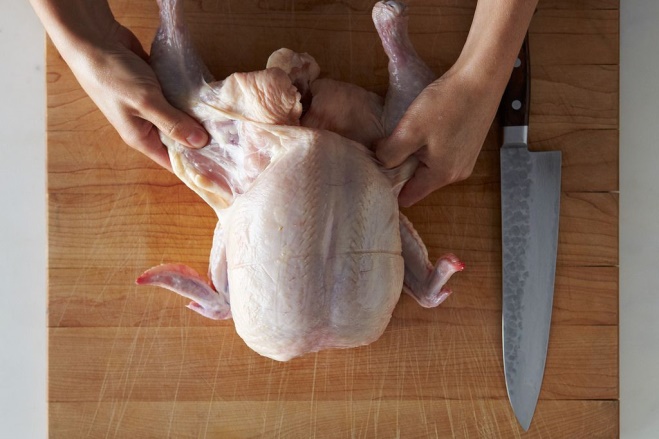
Locate the natural seam where the thigh separates from the body cavity.
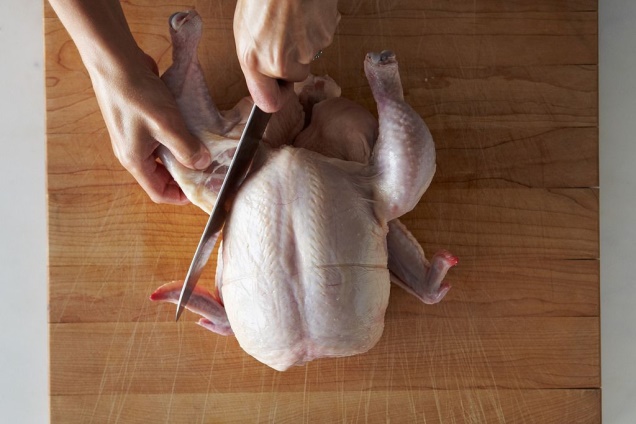
Make a slit -- do this on both sides of the chicken. (And yes, it’s OK to cut raw poultry on wood; wood and bamboo both self-heal and fight bacteria.)
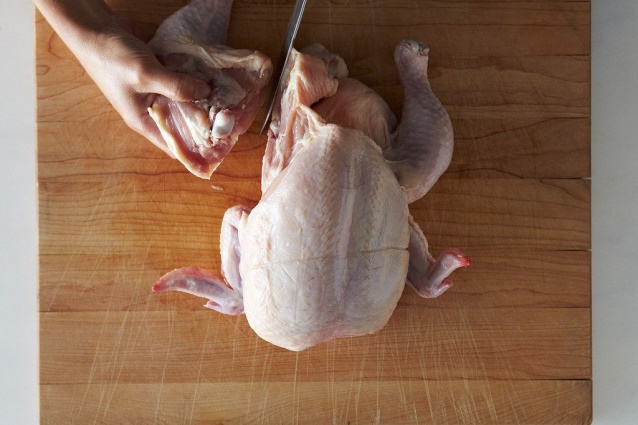
“Reach underneath the thigh and pop the joint where the thigh meets the body. Flip the chicken over and cut through that joint, being sure to angle your knife towards the body cavity, and scoop underneath so that you get the chicken oyster (this is a little gem found on either side of the bird's backbone, and it’s delicious). Repeat this on the other side.
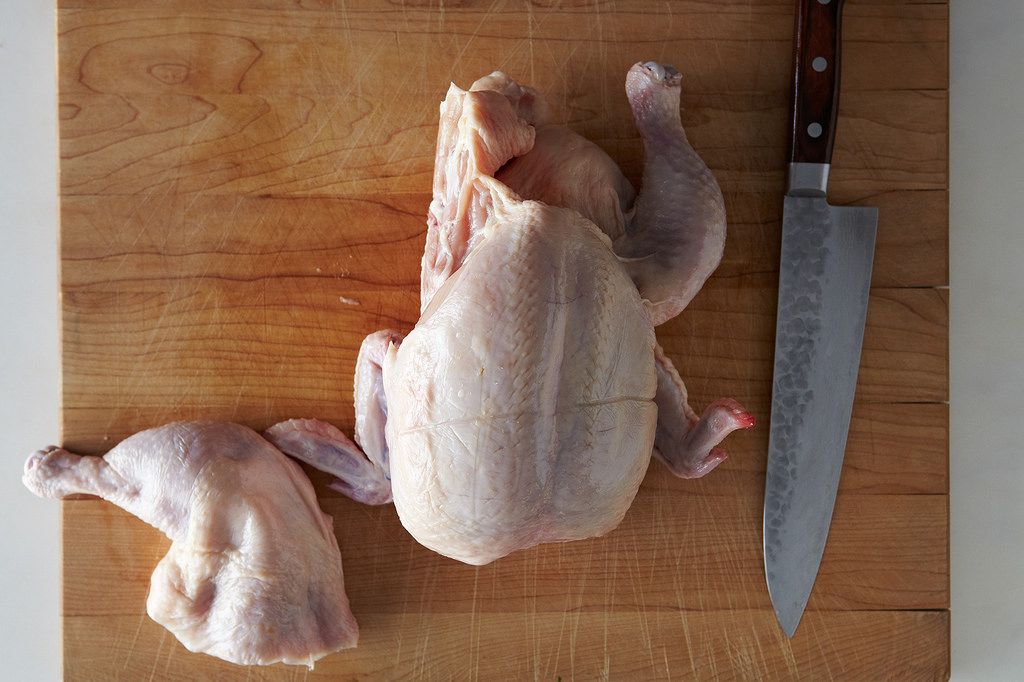
“You can stop at leg-and-thigh quarters, (as shown in the photo), or you can go a step further and easily separate the legs and thighs. There is a natural seam of fat that runs in between the leg and the thigh bone (it’s thin, but it’s there). Simply run your knife along that line of fat and down through the joint to separate the leg from the thigh.
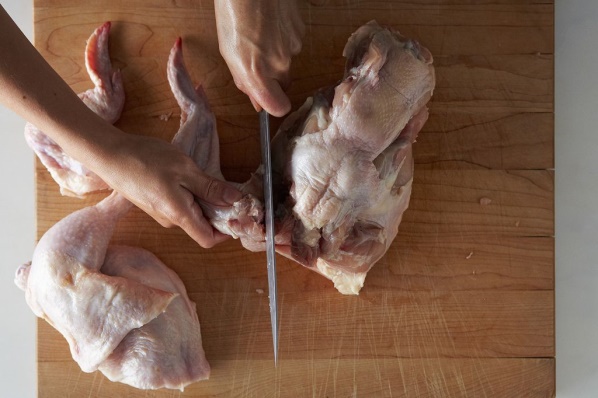
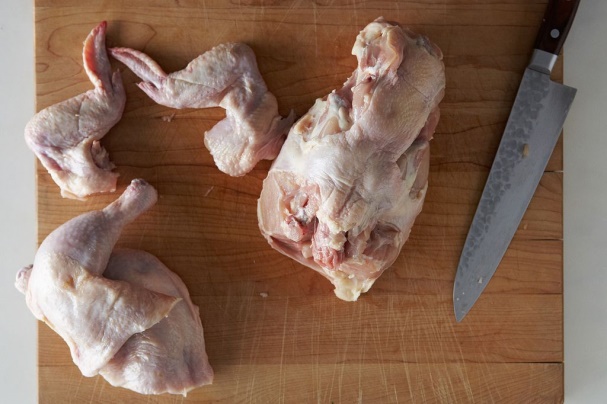
“With the chicken still laying breast-side down, locate the joint where the wing meets the body cavity, and pop the joint, just like you did with the thigh bone. Cut through to release the wing. Repeat this on the other side.
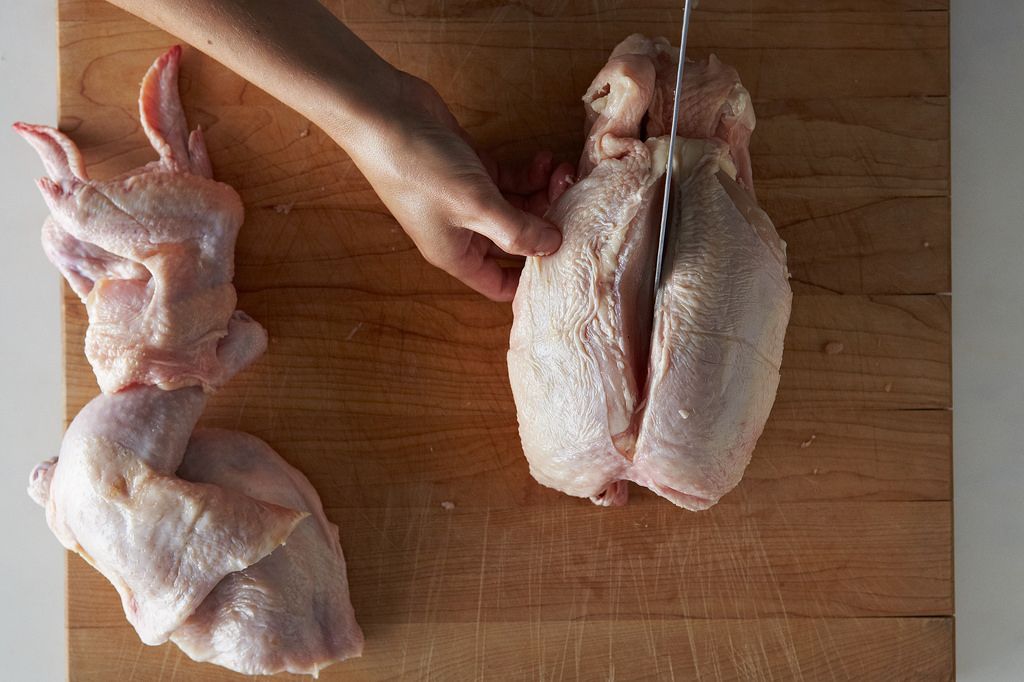
Flip your chicken back over and run your finger along the center of the breast -- you will feel a line of collagen separating the breast into two halves. Run your knife along either side of this collagen, keeping the knife as close to it as possible.
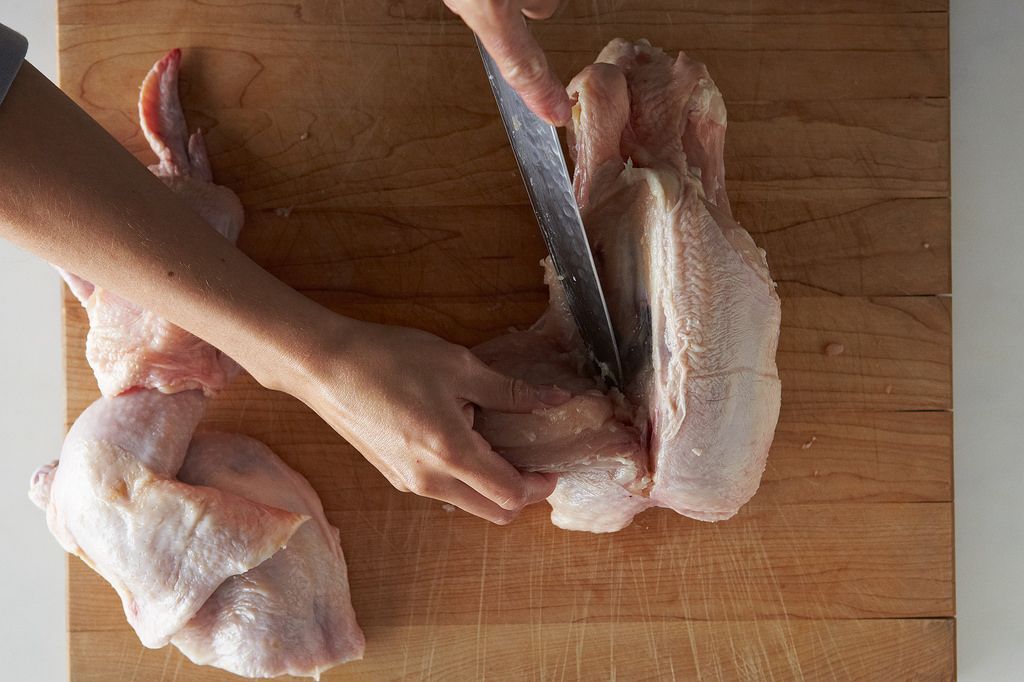
Then peel the breast back, sliding your knife underneath it and along the body cavity as you go, until the breast is free.
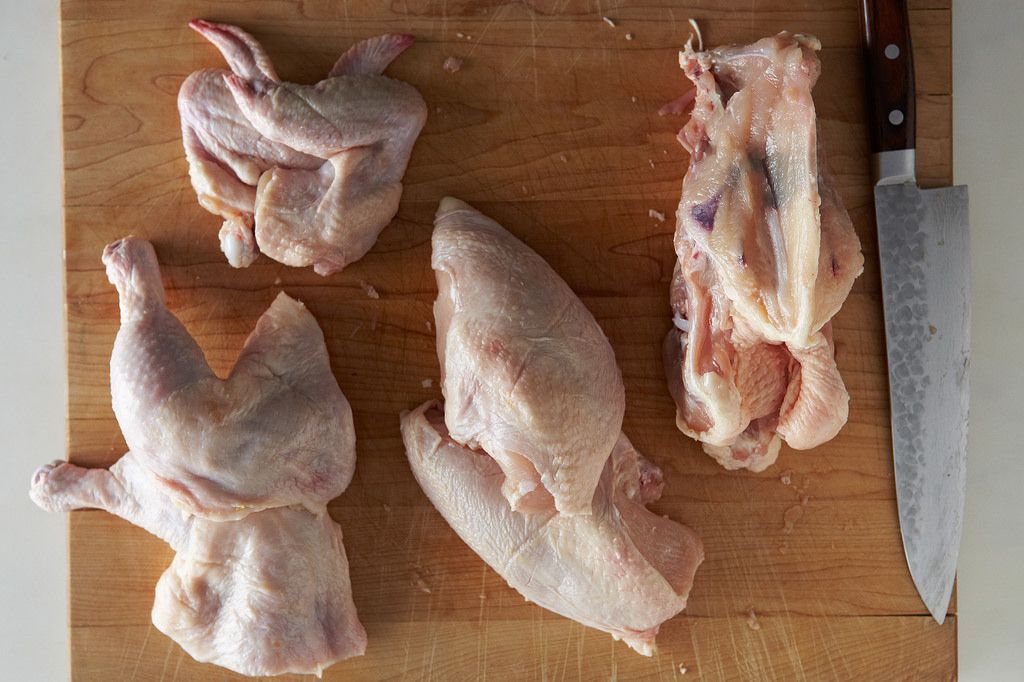
Repeat this on the other side, and voila, you’re done!
Done, that is, except for turning that lovely carcass in to chicken stock. I’ll close with Food 52’s superb recipe that’s easy to do. It makes 5 cups of some of the best I’ve ever had!
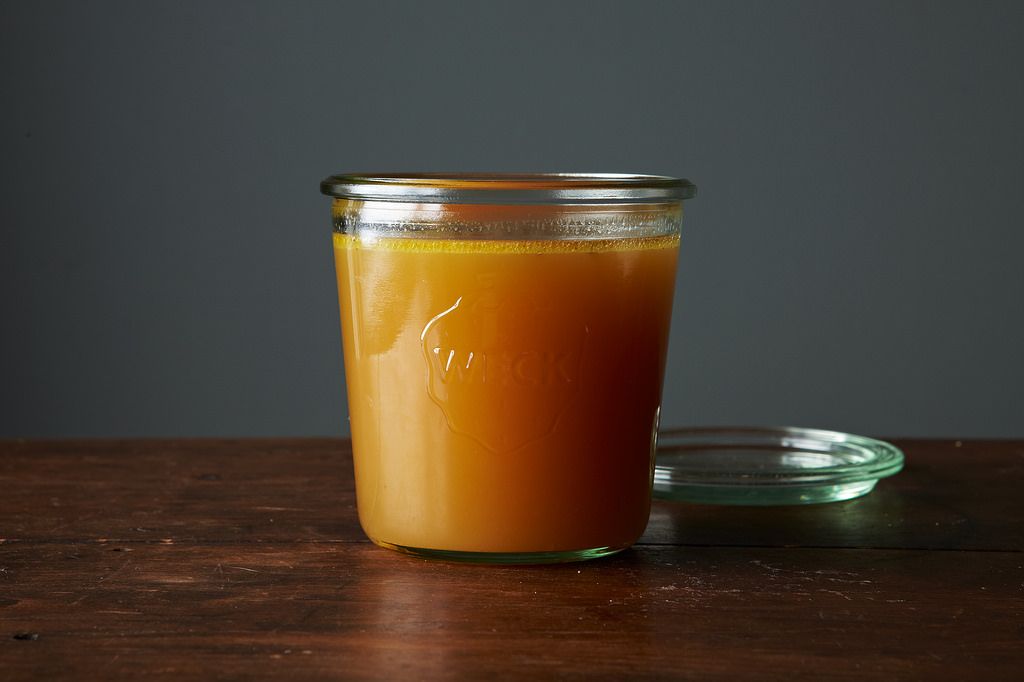
BEST CHICKEN STOCK
1 chicken carcass, wings, and feet (if the chicken comes with feet)
1 large yellow onion, unpeeled and cut in half
1 head half garlic, unpeeled
2 medium carrots, peeled and cut into chunks
2 stalks celery, cut into chunks
2 sprigs fresh thyme
1 bay leaf
1 tablespoon black peppercorns
Half a lemon
Salt to taste
Preheat your oven to 400° F.
Spread chicken carcass, wings, and feet (if you have them), onion halves, garlic, and carrots on sheet trays and roast until carcass is deeply golden brown, about 30 minutes.
Pour off the drippings and reserve them for another use (like gravy).
Add the roasted carcass, wings, feet (if using), and vegetables to a medium stockpot along with celery, thyme, bay leaf, and peppercorns.
Add water until ingredients are just submerged. Bring this mixture up to a boil over medium heat and then reduce it to a simmer.
Simmer, covered, for three hours.
With about twenty minutes left, add the 1/2 lemon if you're using it. Simmer for twenty more minutes, and strain.
- www.food52.com
- www.instacart.com
- www.nerdswithknives.com
 Alice Osborne
Alice Osborne
Weekly Newsletter Contributor since 2006
Email the author! alice@dvo.com
